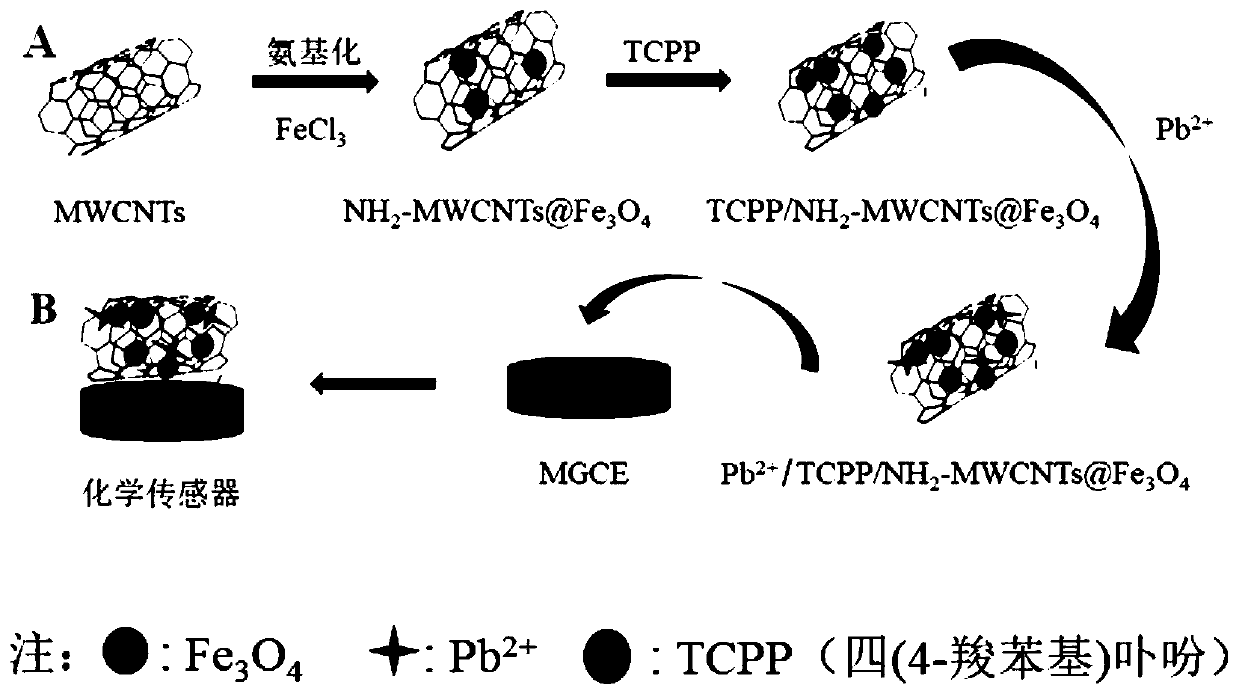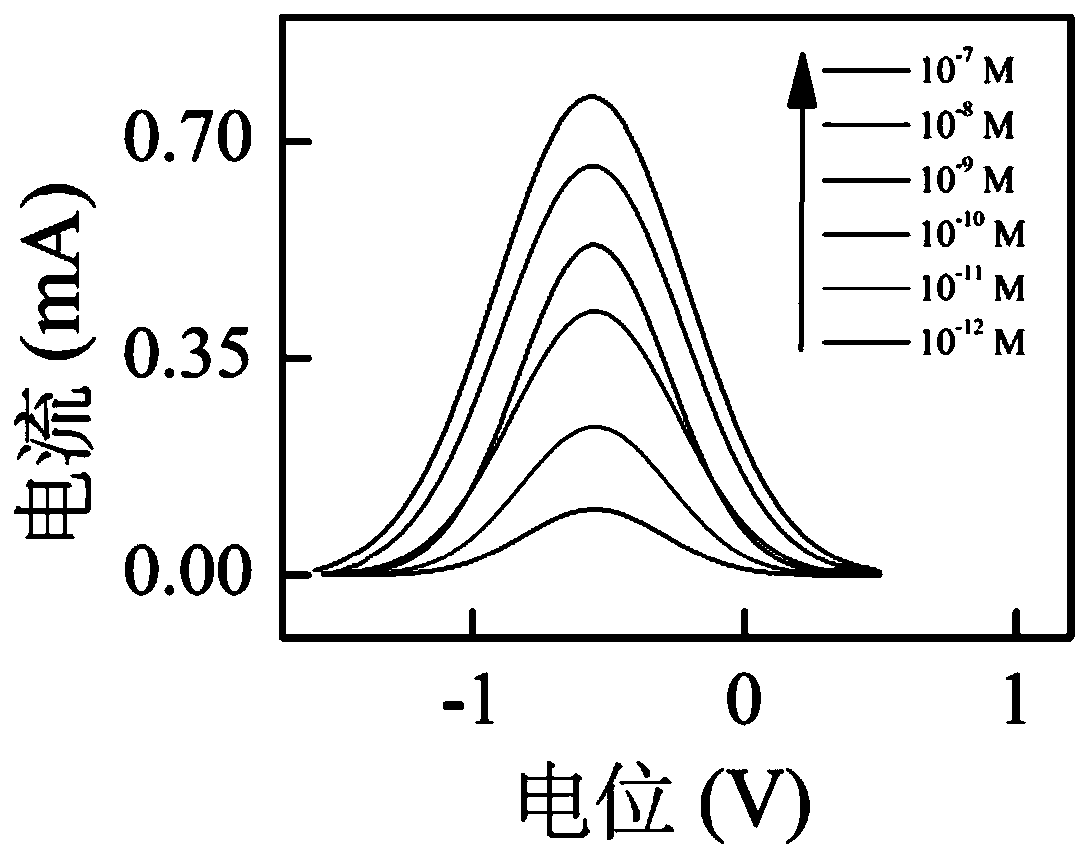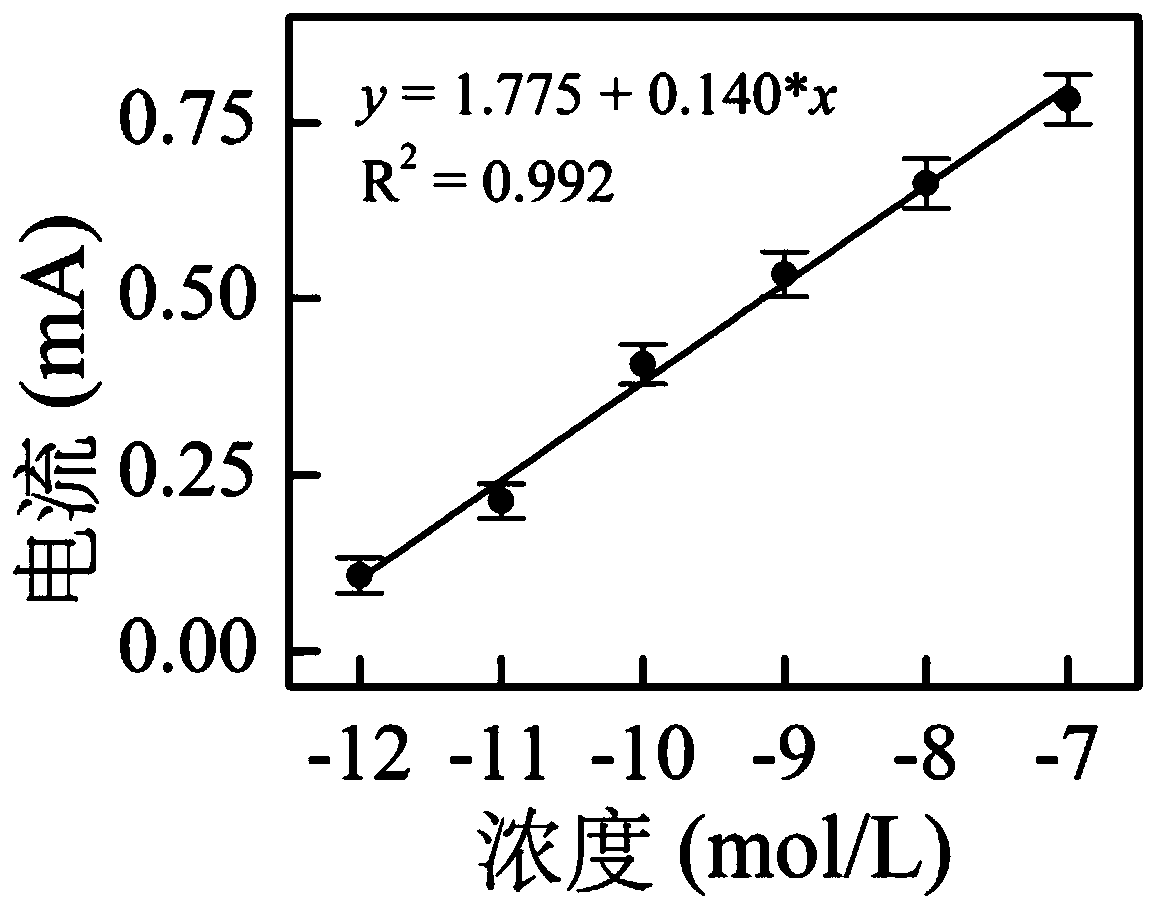Preparation method of electrochemical sensor for detecting lead ions based on rapid scanning cyclic voltammetry technology and application thereof
A cyclic voltammetry and fast scanning technology, applied in the direction of material electrochemical variables, scientific instruments, instruments, etc., to achieve the effect of convenient operation, high sensitivity, and fast detection speed
- Summary
- Abstract
- Description
- Claims
- Application Information
AI Technical Summary
Problems solved by technology
Method used
Image
Examples
Embodiment 1
[0038] A method for preparing an electrochemical sensor based on fast scanning cyclic voltammetry to detect lead ions, comprising the following steps:
[0039] (1) Synthesis of magnetic functional materials (NH 2 -MWCNTs@Fe 3 o 4 )
[0040] a. NH 2 - Preparation of MWCNTs
[0041] Add 400 mg of multi-walled carbon nanotubes to 80 mL of a mixed solution of concentrated nitric acid and concentrated sulfuric acid at a volume ratio of 1:3, ultrasonically disperse for 2 to 2.5 hours, and condense at a temperature of 35 to 45 °C Reflux for oxidation reaction, after the oxidation reaction is completed (the multi-walled carbon nanotubes after oxidation treatment are characterized by SEM, it is found that the length of carbon nanotubes is shorter than that of the original carbon nanotubes, and more ports appear, effectively removing Impurities in MWCNTs), washed by centrifugation until neutral, and vacuum dried overnight at 50 °C to obtain carboxylated carbon nanotubes (COOH-MWCNT...
Embodiment 2
[0051] A method for preparing an electrochemical sensor based on fast scanning cyclic voltammetry to detect lead ions, comprising the following steps:
[0052] (1) Synthesis of magnetic functional materials (NH 2 -MWCNTs@Fe 3 o 4 )
[0053] a. NH 2 - Preparation of MWCNTs
[0054] Add 300 mg of multi-walled carbon nanotubes to 90 mL of a mixed solution of concentrated nitric acid and concentrated sulfuric acid at a ratio of 1:3 by volume, ultrasonically disperse for 2 hours, and condense and reflux at a temperature of 35 °C for oxidation reaction , after the oxidation reaction was completed, it was centrifuged and washed with water until neutral, and dried in vacuum at 45°C overnight to obtain carboxylated carbon nanotubes (COOH-MWCNTs); then 300 mg of carboxylated carbon nanotubes were added to 60 mL of thionyl chloride ( SOCl 2) and 3 mL of dimethylformamide (DMF), stirred at 60°C for 22 hours, centrifuged and washed 5 times with anhydrous tetrahydrofuran (THF), dried,...
Embodiment 3
[0064] A method for preparing an electrochemical sensor based on fast scanning cyclic voltammetry to detect lead ions, comprising the following steps:
[0065] (1) Synthesis of magnetic functional materials (NH 2 -MWCNTs@Fe 3 o 4 )
[0066] a. NH 2 - Preparation of MWCNTs
[0067] Add 500 mg of multi-walled carbon nanotubes to 70 mL of a mixed solution of concentrated nitric acid and concentrated sulfuric acid at a volume ratio of 1:3, ultrasonically disperse for 2.5 hours, and condense and reflux at a temperature of 45 °C for oxidation reaction , after the oxidation reaction was completed, centrifuged and washed with water until neutral, and dried in vacuum at 55 °C overnight to obtain carboxylated carbon nanotubes (COOH-MWCNTs); then 400 mg of carboxylated carbon nanotubes were added to 50 mL of thionyl chloride ( SOCl 2 ) and 2 mL of dimethylformamide (DMF), stirred at 70 °C for 20 hours, centrifuged and washed 5 times with anhydrous tetrahydrofuran (THF), dried, and ...
PUM
 Login to View More
Login to View More Abstract
Description
Claims
Application Information
 Login to View More
Login to View More - R&D
- Intellectual Property
- Life Sciences
- Materials
- Tech Scout
- Unparalleled Data Quality
- Higher Quality Content
- 60% Fewer Hallucinations
Browse by: Latest US Patents, China's latest patents, Technical Efficacy Thesaurus, Application Domain, Technology Topic, Popular Technical Reports.
© 2025 PatSnap. All rights reserved.Legal|Privacy policy|Modern Slavery Act Transparency Statement|Sitemap|About US| Contact US: help@patsnap.com



